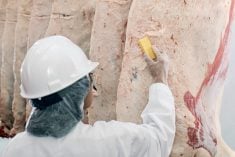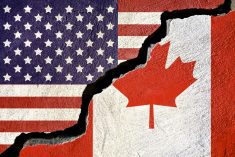The U.S. beef cattle industry is smaller than needed and signals for rebuilding will continue in the coming months. But herd rebuilding is likely to be slow to start and proceed quite slowly initially. So says Oklahoma State University’s Derrell Peel in his latest analysis of the prospects for herd expansion. Meanwhile, a CoBank report says rebuilding the herd could take years as market conditions encourage ranchers to sell rather than keep their young cattle. Although pasture conditions and feed costs are improving, there are still financial upsides for producers to send their beef calves and heifers to feedlots rather than raise them, it says.
Coming into 2024, the beef cow herd was at a 63-year low, the smallest beef cow inventory since 1961, says Peel. This has pushed cattle prices to record levels through 2023 and 2024. Yet there are no indications that any beef herd rebuilding is underway. The question of rebuilding the beef cow inventory is fundamental for cattle markets in the next few years, he says.
A review of historical herd expansions is instructive, says Peel. From 1990 to 1997, the beef cow herd increased by 2.864 million head. During 2014-20, the herd grew by 2.734 million head. The increase wasn’t as great as the previous period, but it was short a year. The herd increased by 1.2 million head in just two years from 2014-16. One of the keys to herd expansion is heifer retention, he says. Beef replacement inventories increased three of four years before the beginning of herd expansion in 1991 and for three years before herd expansion in 2015. Both expansions included one year of very large heifer retention (year 3 in 1993 and year 2 in 2015), with smaller increases before and after, he says.
Read Also

The Canadian Cattle Association’s international advocacy efforts
Global ag policies affect Canadian food policy, so the Canadian Cattle Association participates in international and domestic forums
The industry does not yet have a zero year (low inventory) from which herd rebuilding can begin, says Peel. Beef cow slaughter thus far in 2024 is sharply lower, down nearly 16 per cent year-over-year. But this level of beef cow slaughter, combined with the low beef replacement heifer inventory in 2024, implies that the beef cow herd continues to liquidate by another 0.5 to one per cent in 2024. Beef cow slaughter would have to drop by roughly 22 per cent year-over-year to avoid additional liquidation this year. The current rate of beef cow slaughter indicates a herd culling rate in excess of 10 per cent this year. The culling rate is expected to drop below 10 per cent during herd expansion. Thus 2025 is the earliest zero year for the next expansion to begin. But there is no certainty that additional liquidation will not occur in 2025, he says.
Liquidation of beef replacement heifer inventories in recent years means there is no pipeline or momentum for herd expansion compared to previous expansions, says Peel. Moreover, the level of heifer slaughter and heifers in feedlots in 2024 suggests that the replacement heifer inventory in 2025 is likely to show modest growth at best. Forecasts show a two per cent year-over-year increase in beef replacement heifers in 2025. At that level, the beef cow herd is limited to stable numbers or a very minimal increase in 2025, he says. Beyond 2025, heifer retention could increase more and accelerate herd expansion beginning in 2026. But current conditions do not suggest a high likelihood of sharply accelerating heifer retention anytime soon.
The threat of continuing/redeveloping drought is one factor limiting the beginning of herd expansion at the current time, says Peel. Should developing drought conditions become a reality in the coming months with the return of La Niña, additional herd liquidation is likely. Any herd rebuilding could be pushed off further into the future.
















